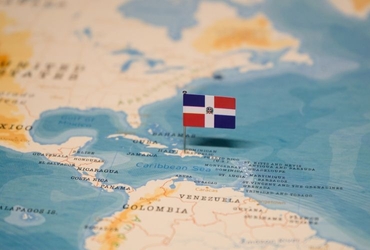
Top 5 ports in Mexico
Mexico’s economy
Mexico is ranked as 13th largest export economy in the world. That’s despite the country’s GDP growth weakening to 2% in 2017 (from 2.286% in 2016) due to uncertainties from the North American Free Trade Agreement (NAFTA) renegotiations, a slowdown in investments, among others.
Notwithstanding, investments are expected to resume growing in 2018 as these concerns begin to ease. Analysts say this should result in an accelerated growth of Mexico’s economy. With that, we should expect to also see an increase in container shipping to and from Mexico. Already, we’re seeing signs of improvement, with the country registering a 1.1% GDP growth in the first quarter of the year - exceeding the 0.8% market expectation. It was the fastest growth rate in six quarters, thanks to the recovery of industrial production and a boost in services, which grew at 0.7% and 1.2% respectively.
Economists are expecting the country’s GDP to grow 2.4% in 2018 but if these figures keep up, estimates could reach as high as 2.7%.
Mexico’s ports’ capacities have increased by more than 56% from 260 million tonnes in 2012 to 406 million in 2017. With ocean freight transportation responsible for 90% of the world’s economy, it’s important to get to know Mexico’s top seaports to better understand the workings of the country. Here’s a look at the top 5 ports in Mexico.
![]()
5. Port of Ensenada
The Port of Ensenada is a deepwater port on the western coast of the Baja California region, just 110km from the US state of California. It has cargo and cruise terminals and accommodates the unloading of containers at its docks.
In 2016, the port registered more than 191,000TEUs in cargo throughput. Given its strategic location on the Pacific Coast, it has direct connections to 64 ports in 28 countries. Most of the ships calling at the port hail from Asia, North America, and South America.
The three most important land routes for the transport of merchandise to and from the port are the Tijuana – Ensenada highway and the Tijuana – Ensenada and Tecate – Ensenada federal highways. Most of the cargo arriving at and departing from the Port of Ensenada use these three routes, which also connect to the key highways in the US. Plus, these routes offer direct connections to the cities of Tijuana, Tecate, and Mexicali, which are major US border crossings.
4. Port of Altamira
The Port of Altamira is located on Mexico’s eastern coast facing the Gulf of Mexico. It’s connected to 125 ports, most of which lie along the Atlantic coast. Domestically, its land and rail connections link the port directly to the northern and central parts of the country, including important cities such as Monterrey, Saltillo, Reynosa, Guadalajara, Mexico City, etc.
In 2016, the port handled 684,930TEUs. Most of the port’s cargo include general, dry and liquid bulk, petrochemicals, LNG, containers, and oversized automobiles. Half of its cargo have origins and/or destinations in the port’s northern zones of Tamaulipas, Nuevo León, and Coahuila, whereas 28% go to or come from the central regions of San Luis Potosí, Zacatecas, Jalisco, Guanajuato, and Querétaro.
3. Port of Veracruz
500km to the south of the Port of Altamira lies Mexico’s third largest port - the Port of Veracruz. Also located on the country’s eastern coast with direct access to the Gulf of Mexico, the Port of Veracruz handled 965,290TEUs in 2016. This port was Mexico’s largest until 2005, when it was overtaken by the Port of Manzanillo.
The port of Veracruz dates back to Spanish colonization, when it was used to import African slaves to work in shipyards and sugarcane fields. During its colonization, it was the country’s most important port, exporting turkeys, corn, beans, avocados, and cotton to Spain, and importing wheat, rice, cattle, pigs, fabric, wine and other goods.
Today, the Port of Veracruz is the country’s oldest and most historically-significant port. And as the first port to be equipped to handle automobile shipments, it’s one of the most important ports for Mexico’s automotive industry. Through well-connected railways and highways, the port serves all of central and southern Mexico, with connections to as far north as the US state of Illinois. And given its strategic location on the Gulf, it provides ocean freight services to North, Central, and South America, Europe, and Africa.
The port is currently undergoing a $160 million expansion, which includes the construction of Latin America’s longest breakwater at 4.3km long. The new facility will accommodate five terminals and around 35 berths, which will help to increase capacity from 28 million tonnes to 95 million tonnes per year. The project is set to conclude in June 2018.
2. Port of Lazaro Cárdenas
The port of Lazaro Cárdenas is located on Mexico’s Pacific Ocean basin and is one of the largest seaports in the area. In 2016, the port handled over 1.11million TEUs, making it the country’s second-busiest port.
This deepwater seaport is equipped to accommodate post-panamax vessels, and handles containerized cargo, dry bulk, and liquid cargo. A new semi-automated terminal, opened in 2017, has the capability to handle more than 1.2million containers per year. With that, the port’s capacity is expected to increase from 27 million to 29 million tonnes.
Due to congestion at the US west coast ports of Long Beach and Los Angeles, the Port of Lazaro Cárdenas is expected to act as an alternative gateway for shippers looking to reach US markets, making it an important container facility.
The port is well-connected to Mexico City, located just some 620 km away, and the US through the Kansas City Southern de Mexico rail network.
1. Port of Manzanillo
Mexico’s largest port, the Port of Manzanillo, is located in the state of Colima along the pacific coast and handles the Pacific Ocean cargo for the Mexico City area. Most imports destined for central Mexico come through the Port of Manzanillo, and given its location, it acts as an important port for Asian importers and exporters. The port handled over 1.58 million TEUs in 2016, 41% more than second-placed Lazaro Cárdenas.
Most of the port’s exports are shipped to neighboring United States, Canada, Guatemala, and Colombia, but also to farther off countries including Japan, China, India, Malaysia, and Singapore. Its main exports include beer, cars, cement, sugar, copper, steel tubes, carbon, glucose and resin.
Following the expansion of the Port of Lazaro Cárdenas, the Port of Manzanillo is also currently undergoing its own expansion works. Its SSA Mexico’s terminal is already operating nearly at full capacity, and its expansion is likely to increase its container volume by 17% from 1.8 million TEUs to 2.1 million TEUs. The project also includes a new berth to increase the overall terminal area by approximately 30%.
This is in parallel with a current project involving the construction of a tunnel that will provide freight trains round-the-clock access to the port. Port authorities are hoping this will help to increase the port’s rail volumes two fold.
Can you name the top 5 ports in #Mexico? 🇲🇽 https://t.co/nEg3BrhB0C pic.twitter.com/qnOE6Z9ECv
— iContainers (@icontainers) June 12, 2018
Related Articles


